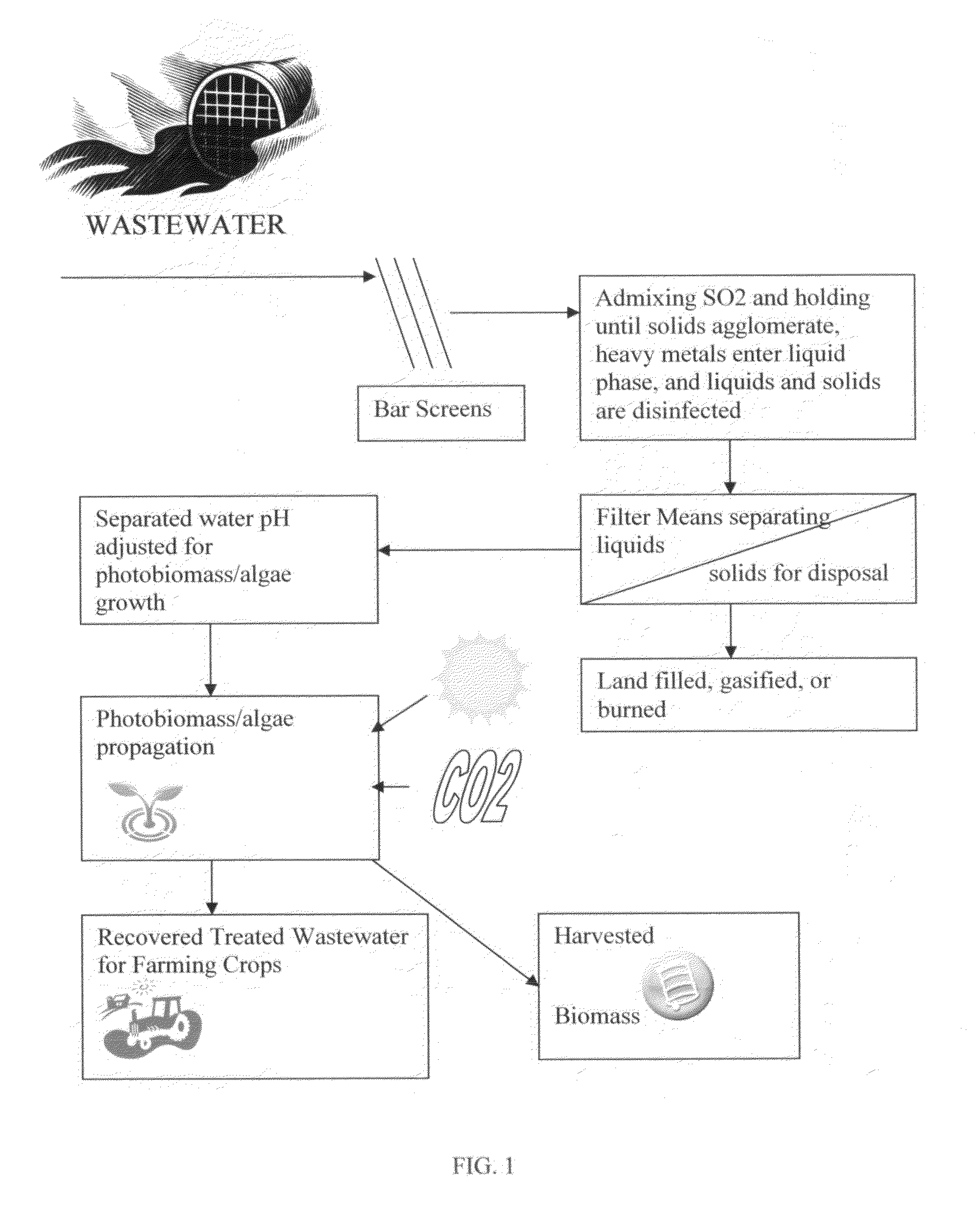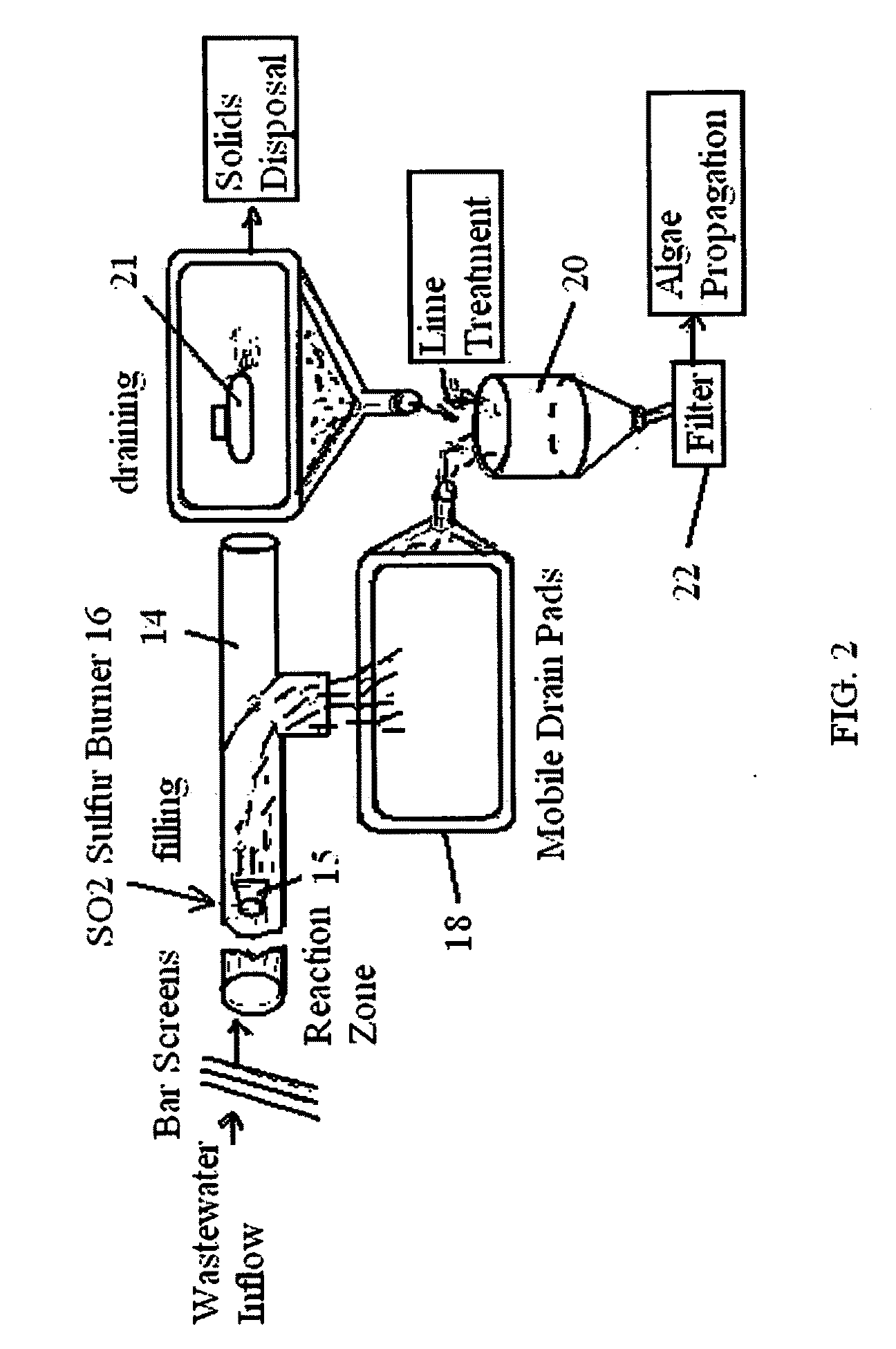Wastewater photo biomass/algae treatment method
a technology of photo biomass and algae, applied in the field of wastewater treatment, can solve the problems of reducing the production of cosub>2 /sub>2 bacteria, and achieve the effects of preventing eutrophication, significant environmental benefits, and minimizing stream eutrophication
- Summary
- Abstract
- Description
- Claims
- Application Information
AI Technical Summary
Benefits of technology
Problems solved by technology
Method used
Image
Examples
Embodiment Construction
[0113]FIG. 1 illustrates a typical layout of the wastewater treatment method disinfecting and adjusting the recovered treated wastewater for photo biomass / algae propagation. The wastewater is screened to remove courser solids before admixing sulfur dioxide into the screened wastewater. The sulfur dioxide-treated screened wastewater is held until the solids agglomerate, heavy metals are acid leached from the solids into the liquid phase, and the liquids and solids are disinfected. The sulfur dioxide-treated screened wastewater is then passed through filter means to separate the solids for disposal from the sulfur dioxide treated liquids containing disinfected plant nutrients. The sulfur dioxide-treated liquids are then pH adjusted to the pH required to grow photo biomass / algae. The pH adjusted sulfur dioxide-treated liquids are then sent to a bioreactor containing photo biomass / algae. Sunlight and carbon dioxide are then admixed with the nutrients in the pH adjusted sulfur dioxide-tr...
PUM
| Property | Measurement | Unit |
|---|---|---|
| Fraction | aaaaa | aaaaa |
| Fraction | aaaaa | aaaaa |
| Fraction | aaaaa | aaaaa |
Abstract
Description
Claims
Application Information
 Login to View More
Login to View More - R&D
- Intellectual Property
- Life Sciences
- Materials
- Tech Scout
- Unparalleled Data Quality
- Higher Quality Content
- 60% Fewer Hallucinations
Browse by: Latest US Patents, China's latest patents, Technical Efficacy Thesaurus, Application Domain, Technology Topic, Popular Technical Reports.
© 2025 PatSnap. All rights reserved.Legal|Privacy policy|Modern Slavery Act Transparency Statement|Sitemap|About US| Contact US: help@patsnap.com



